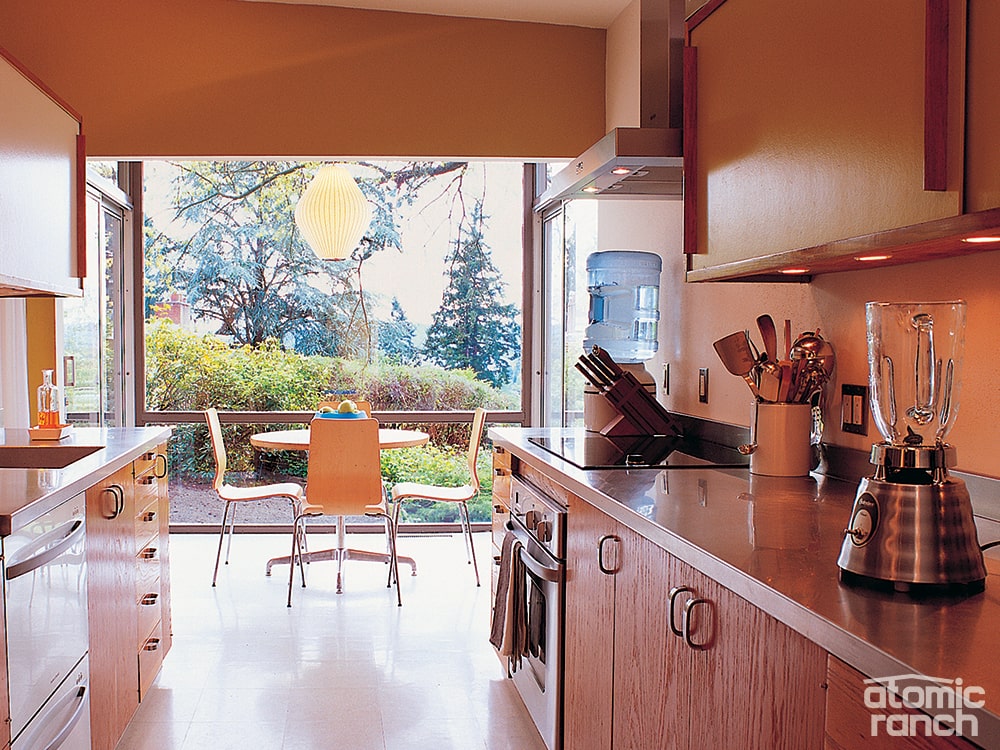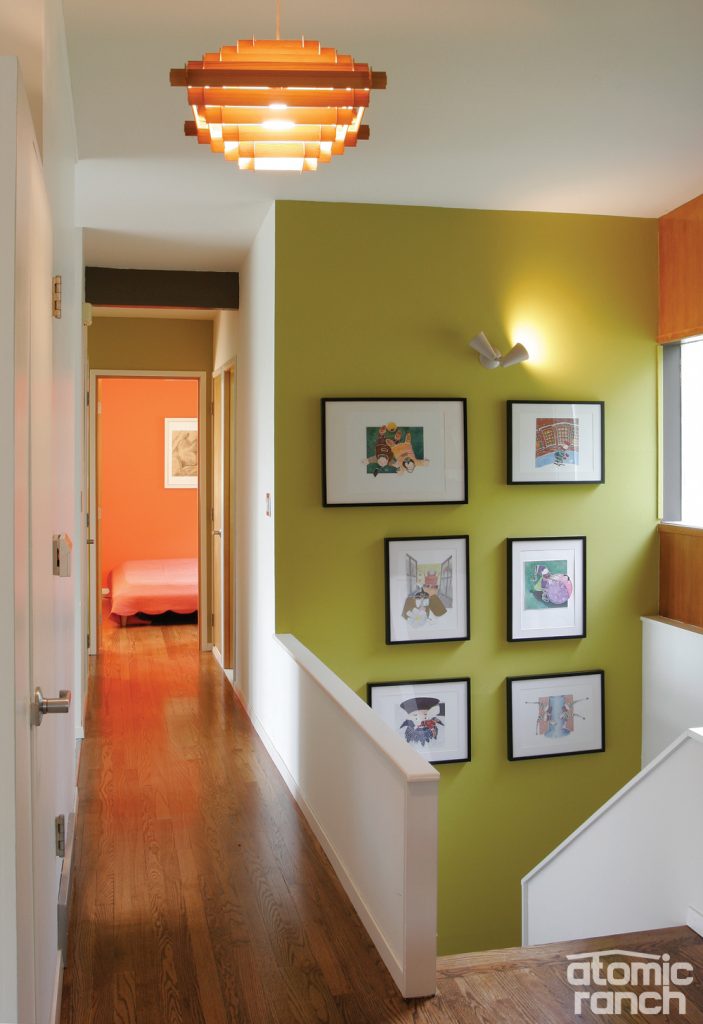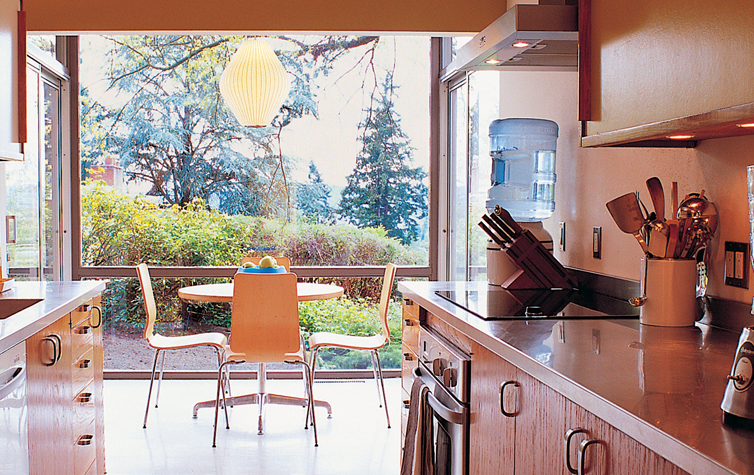
When the traveling Barratt family decide to settle down in Seattle, Washington, they found a rare Kirk midcentury home and seized on the opportunity (part 1). After exhausting the resources in the local library on everything Seattle midcentury (part 2), they finally started renovating.
Luckily, our new house had only one previous owner and was never remodeled. Our work was cut out for us, but there was already the perfect foundation in place. We started with the fundamentals. We did the plumbing, electrical and the like, trusting that beauty was not at all skin deep, not in this case anyway. Next we moved to the floors, refinishing the original wood, which also included a wood wall in our living room.

In the kitchen, we traded one upper cabinet for a Bosch exhaust hood, replaced the degraded laminate counters with stainless steel and installed new appliances. This included a refrigerator, oven and dishwasher drawers from Fisher & Paykel, a Bosch cooktop, Sharp microwave and Miele built-in espresso maker. VCT tiles run from the kitchen into the breakfast nook, a bumped-out area done by the long-time previous owner.
In the downstairs family room, we kept the original plywood built-ins and cooktop—for now. Oscar’s boy toys can expand out of his bedroom into the TV-watching-lounge-around space that opens directly to the back patio.
We only recently finished painting the exterior. We researched period-appropriate colors, choosing hues that complement the Northwest landscape. Pacific Northwest modernist postwar homes often include a raised, covered entryway leading from the parking area. While carports were more modern and less expensive to build than garages, midcentury architects still needed to address wet weather practicalities.
We’re now in the midst of having the landscape designed. In future projects, we intend to preserve the original space, but we also want to rejuvenate it with redefined materials and textures. We plan to take the interior to the next level. We want to improve the finishes, the bathrooms and the lower level, one step at a time with a promise to stay true to the spirit of the ’50s. The respect for the architect, the research for the colors and the furniture we have chosen are all related to our careers in design.
Our family has lived in a great many places—each amazing in its own right, but it is here, in this home we’ve made together, that we are happiest. In years to come I am certain this house will both hold and inspire a lifetime of beloved stories.












